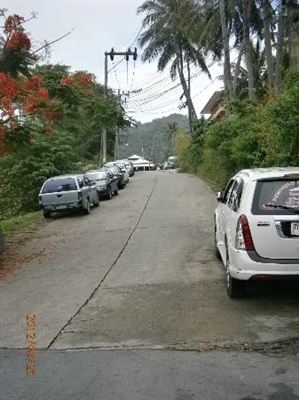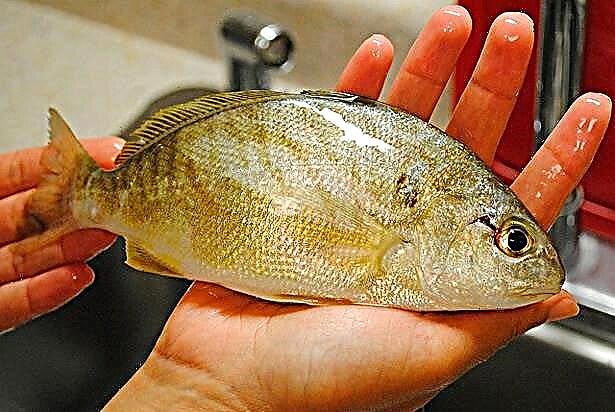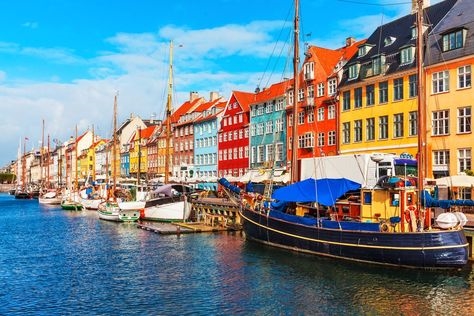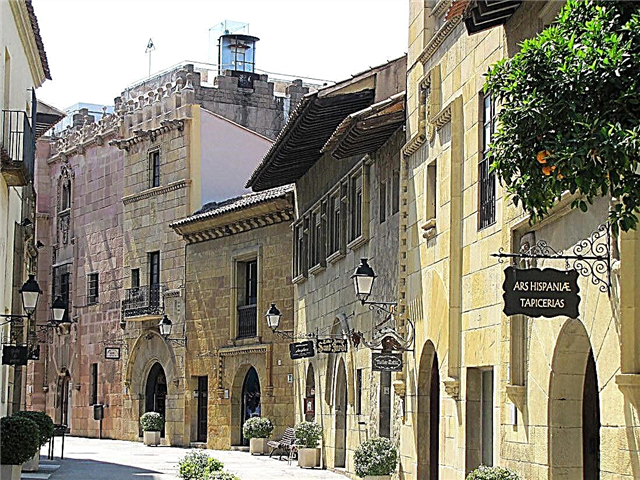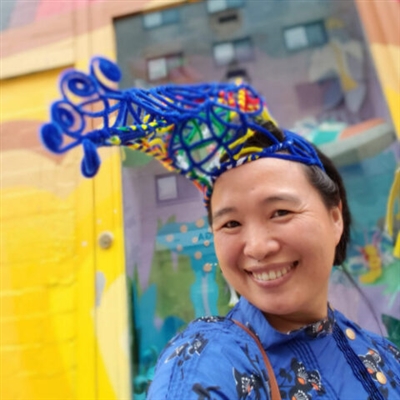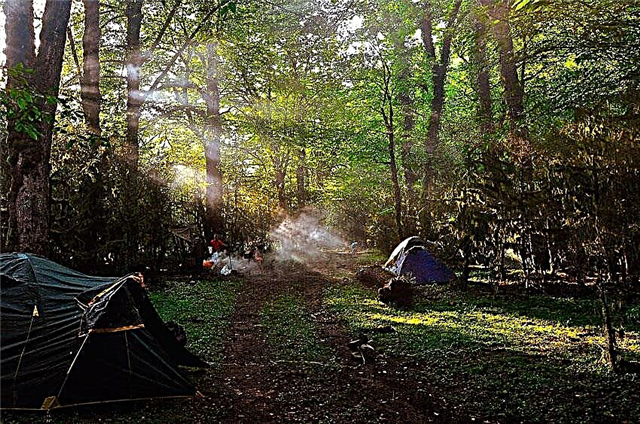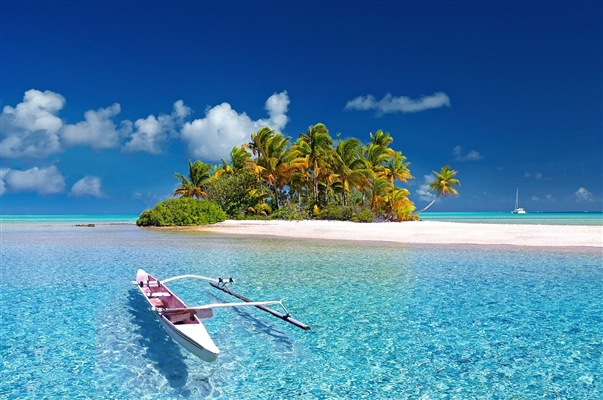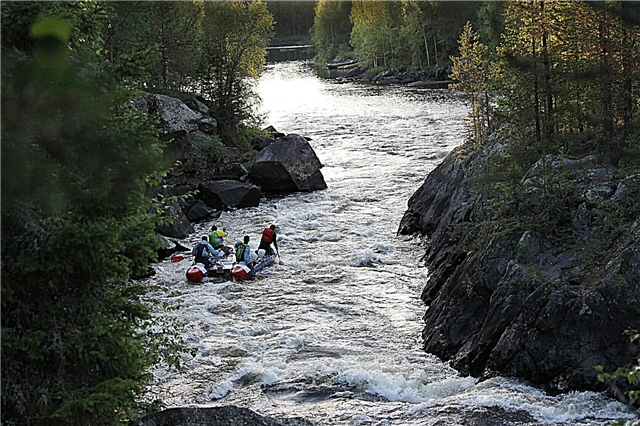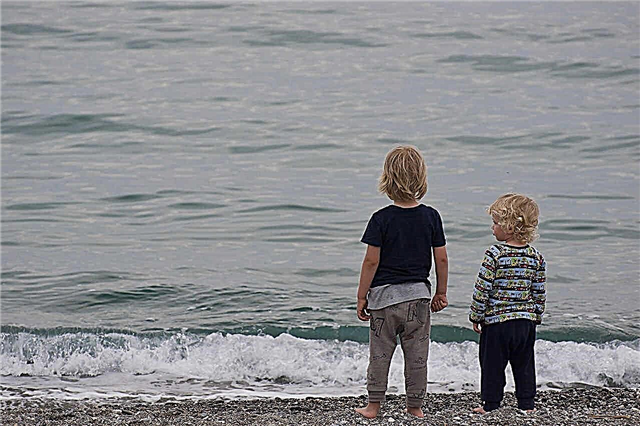In this article, we consider the main attractions of Bordeaux and the city's environs. We got an overview of 25 interesting places with photos and descriptions, where we definitely recommend to go. As a bonus, we added the best restaurants in the city according to tourists' reviews, which are ideal for an evening dinner after sightseeing walks and excursions.
Bordeaux (France) is built on the banks of the Garonne River. Numerous vineyards and wine-making traditions dating back to the ancient Romans have brought the region worldwide fame. Its own port and the constant development of trade relations, after several centuries, turned the city into the capital of winemaking and a major cultural center of the country. Let's find out what makes Bordeaux attractive to tourists?
Exchange Square

Initially it was Royal, and then it became Freedom Square. The street received its present name in 1848.
Exchange Square is one of the city's symbols on the Garonne embankment, designed by the architect Gabriel, after whose death his son completed the work. The construction of the square lasted from 1730 to 1755.
The architectural complex of the square consists of two mansions built in the Baroque style. It is complemented by the fountain of the Three Graces, designed by the architect Louis Visconti.
The modern Fountain of Mirrors, installed in 2006, is located near the medieval buildings of the Birzhevaya Square.
St. Peter's Church


In 1908, it was ranked among the historical and cultural sites of the country. The cathedral was built in the very center of the city in the sixth century. Over the centuries, the temple was rebuilt several times. Now only its facade has survived with Gothic windows located symmetrically from the entrance.
The interior of the church is represented by only a few antiques, including a wooden composition, a medieval baroque altar, a painting from 1664. The rest of the decoration of the temple was made in the 19th century and later.
Moon Port in Bordeaux


The port received this name due to the bend of the river in the form of a crescent, where there was a marina for merchant ships. On the left bank there are many local architectural attractions. Since that time, this interesting place has been considered the historical center of Bordeaux.
During the Roman Empire, the port was a city gate through which a variety of expensive goods were sent abroad.
In 2007, the Port of the Moon was added to the UNESCO list. We recommend starting your acquaintance with the city from this place.
Cathedral of Saint Andrew

It was consecrated back in 1096, but its construction continued for another five centuries. It is noteworthy that in 1137 the future King Louis VII married Eleanor of Aquitaine in this temple.
The cathedral was built in the Gothic style and has a beautiful façade depicting scenes of the Last Judgment. Its interior is decorated with paintings, sculptures and an astronomical clock from the 18th century. A modern organ with excellent sounding is installed in the temple.
The cathedral has been a UNESCO site since 1998.
Perlan Tower

The famous landmark of Bordeaux, named after the local Bishop Perlan, who founded a university for the poor. In 1440, Perlan initiated the construction of the bell tower of the Church of St. Andrew, almost 70 meters high.
The spire is crowned with a gilded sculpture of the Virgin Mary holding a baby in her arms. The building itself is made in the Gothic style and decorated with luxurious carvings.
At the end of the 19th century, an eight-ton bell was installed on the tower. The top of the tower is surrounded by a terrace.To climb it and admire the gorgeous city panorama, you will have to climb 230 steps.
Aquitaine Gate

Built with the light hand of the local mayor, Marquis de Tourny, in the middle of the 18th century. The building is located on the Victoire Square and is a triumphal arch made of pink stones. The triangular pediment of the structure is decorated with stucco, and the upper part of the gate contains the image of the royal coat of arms, sea deities and shells.
From the Aquitaine Gate, Rue Saint-Catherine begins, which is almost one and a half kilometers long, where numerous shops are located.
Great synagogue

Appeared in Bordeaux in the second half of the 19th century, construction began in 1877 and lasted almost 5 years. The temple was badly damaged during the Second World War and was plundered by German troops, but ten years later it was rebuilt. Moreover, at this time the synagogue was used as a temporary prison for Jews, they were kept here until they were sent to the camps. At that time, a huge number of people died (about 1600 people), this is evidenced by a memorial plaque next to the landmark.
Since 1998, the synagogue has been a historical monument. Now the temple is used for its intended purpose, it is visited by Jewish emigrants from North African countries.
Grand Theater

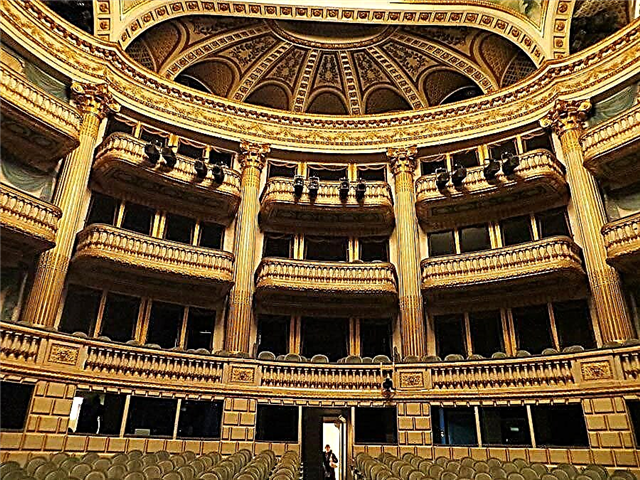
Several centuries ago it was the center of urban life, especially among the elite. The theater was built in 1780 in the neoclassical style by the architect Victor Louis, located on the Place de la Comédie, open throughout the year. We definitely recommend visiting the theater, you will immerse yourself in that ancient era when noble families came here for a fascinating pastime on one of the balconies of the institution. This is evidenced by chic chandeliers and painted ceilings, antique doors with graceful handles, solid wood floors, and other elements.
The theater hosts opera and ballet performances, concerts of a symphony orchestra, as well as numerous excursions. The building of the Grand Theater belongs to one of the most beautiful theater buildings in the world.
Natural History Museum

It occupies a special place among the museums of Bordeaux. It has been located in the Lisleferm Hotel since 1862 and has a rich collection that tells about the flora and fauna of our planet. The museum exhibits models and skeletons of various animals living on all continents, as well as various finds discovered during archaeological excavations.
Monument to the Girondins

Overlooking the Esplanade Kencons square. The monument was built for eight years until 1902. It consists of a fifty-meter column with the Statue of Liberty at the top. The column is surrounded by fountains with interesting sculptures.
The monument to the Girondins is the creation of three architects: Victor Risch, Auguste Bartholdi and Achilles Dumilatre. It is dedicated to several residents from the Gironde department who were members of the country's legislature and represented the interests of the provincial bourgeoisie. In 1793, terror began against the Girondins. Some of them were executed in Paris, and those who fled to the provinces to organize uprisings were also destroyed.
Only in 1989 a memorial plaque appeared on the monument with a list of their names.
Botanical Garden

Want to see the green sights of Bordeaux? Head to the Botanical Gardens and City Park, located just outside its center. The history of the garden began at the beginning of the 17th century, when a vegetable garden was set up on the territory of a public park and medicinal plants were grown to obtain essential oils. A century and a half later, plants from tropical countries began to be brought here to adapt to local climatic conditions. Gradually, the area of the vegetable garden expanded, and it acquired the status of a botanical garden.
The royal architect Gabriel made a great contribution to the planning of the garden, whose style was greatly influenced by the landscape architect André Le Nôtre.
Gross-Cloche Tower

The medieval fortification is a symbol of Bordeaux, the silhouette of the bell tower of which is adorned with the city coat of arms.The tower originally hung another bell, but it was knocked down in the middle of the 16th century by order of the king, who thus decided to punish the rebellious peasants.
The current bell of the tower, weighing almost eight tons, was made in 1775. At the top of the central part of Gross-Cloche there is a rotating golden leopard.
Parliament Square

The city's historical monument, the central part of which has been decorated with a fountain built in the late Renaissance style since 1865. On its pedestal are figures of nymphs and mascarons, and the base is made of gilded limestone slabs.
The square is surrounded by beautiful old mansions with decorated facades. Not sure what to see in Bordeaux? Be sure to visit Parliament Square.
Pont de Pierre bridge

The first of three bridges built across the Garonne River to connect the two parts of the city. The structure was built in 1819-1822. The initiator of its construction was Napoleon Bonaparte, who could not urgently cross over to the other side with his army.
The length of the bridge is almost 500 meters. It has 17 spans - the same as the number of letters in the name of the emperor. It is known as a stone bridge among tourists.
Church of Our Lady
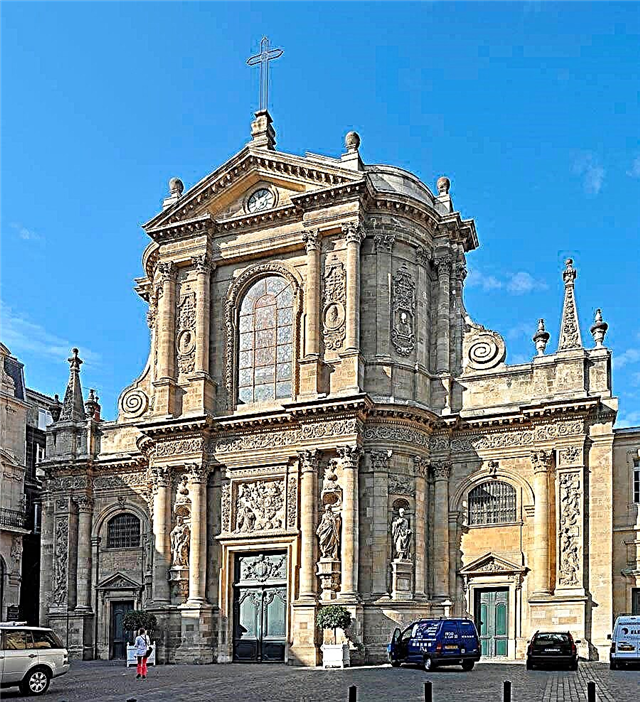
It was built in the first decade of the 18th century, but it got its name only a hundred years later. Since 1908, the temple has been listed as a historical monument. Its facade is notable for its relief decoration, the presence of stained glass windows, sculptures, columns and medallions. The church interior of the cathedral is also beautiful. Here tourists will see magnificent frescoes, a marble altar, gilded bas-reliefs, paintings by the monk Andre Jean.
An old 18th century organ is installed in the Church of Our Lady; organ music concerts are often held here.
Burgundy gate

Or the Arc de Triomphe built in the middle of the 18th century under the direction of the architect Gabriel. The structure is located next to the Stone Bridge, built in the form of a classic arch with columns on the sides.
The Burgundy Gate in 1921 was included in the list of historical city monuments.
Rue Sainte-Catherine

What else to visit and where to visit in Bordeaux for shopaholics? Certainly on this street - the longest in Europe (1.2 km), connecting Comedy Square with Victory Square. At the beginning of this century, Sainte-Catherine was completely renovated. Numerous shops, boutiques and historical sights are concentrated on it. Beware of pickpockets when walking. It is also worth considering the prices, they are higher than the average for the city, and are designed for tourists.
Rogan's palace
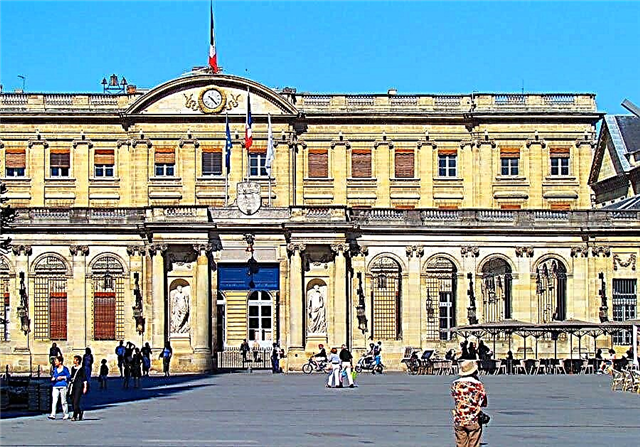
Named after Archbishop Rogan, who initiated its construction. The construction of the mansion was very costly, so the archbishop had to sell part of his land holdings in order to complete it in 1784.
Initially, the palace was used for various needs, and from 1835 to this day it houses the city hall.
The palace is located in the Pe-Berlan square.
Wine Museum


Housed in a beautifully preserved two-story historical building. The luxurious museum collection is rich in numerous artifacts, manuscripts, wine-making tools and other items related to the production and marketing of wine. The museum has three cellars with containers for storing and aging the aromatic drink.
In the museum, guests are told about the stages of development of the region, which eventually became the center of world winemaking, where berries are grown for the production of Bordeaux wines. Included in the main sights of France, which are worth visiting primarily for tourists.
D'Arsak Castle

While exploring the sights of Bordeaux and the surrounding area, visit this mansion and the nearby vineyards. In the 12th century, the castle belonged to the same family, which was already engaged in the production of wine. From the 16th century, the building became the property of Thomas de Monten, and later Baron D'Arsak.
In the 18th century, the number of vineyards increased significantly, filling the beverage market with new varieties of noble wines. After two centuries, wine production declined significantly as a result of the phylloxera epidemic that hit the vineyards. By the middle of the 20th century, the economy fell into decay and ceased to exist. However, Philippe Roux bought Château D'Arsac in the mid-80s and brought him back to life. Now the winery of Philippe Roux is very successful and makes a great contribution to the development of wine traditions.
We recommend visiting other chateau in the vicinity of Bardo. When traveling on your own, be sure to agree on the time of your visit on the official website. Yes, each castle has its own website. Moreover, popular chateau register tourists to visit as much as three weeks in advance.
The village of Saint-Emilion

What is the first thing to do in Bordeaux and the surrounding area? Saint-Emilion is a quiet and peaceful area with a huge number of vineyards. This village has the same orange-red roofs of houses, many sloping streets, descents, ascents, and, of course, wine cellars, in which a wonderful drink matures.
It is in Saint-Emilion that Europe's only underground medieval church is located.
Aquitaine Museum

Housed in a 19th century building, and its area is 5 thousand square meters. m. The museum contains 70 thousand items that tell about the city, region, maritime history of Bordeaux, etc. The earliest copies of the museum collection date back to the prehistoric era.
National Customs Museum

It is located in a building that is part of the architectural ensemble of Birzhevaya Square. The construction of 1733 in the Baroque style is decorated with statues of the gods.
The museum was opened in 1984. Among its exhibits are confiscated items at customs, weapons and uniforms of customs officers, counterfeit money and various devices intended for the illegal transportation of prohibited goods.
Jean Moulin Center

Founded in honor of Jean Moulin - a member of the Resistance and a hero of the Second World War. Before the war, he was prefect of Chartres, but in 1943, after being arrested, he died of torture. The creation of the center was initiated by the former mayor of the city, Jacques Chaban-Delmas, in 1967.
The center is located in an old building and contains exhibits that tell about the work of the French underground.
Basilica of Saint Michael

The 15th-16th century temple in Place Menard, designed by the architect Loeb at the behest of the king. Over the years of its existence, it has undergone many changes, especially after the earthquake, the spire was destroyed. During the war years, it lost its unique stained glass, which had been restored for a very long time by other masters of their craft.
It is worth mentioning the burials, the temple stood in the cemetery, in the soil of which mummies were found during the land improvement work. At that time (mid-18th century), there were various legends about this interesting place. Some of the remains until 1980 could be seen in the underground room of the cathedral. After that, a decision was made on the burial.
Now the temple admires its graceful architecture. The bell tower of the basilica is 115 meters high, making it one of the longest in the world.
Excursions in Bordeaux in Russian
Where to eat deliciously?
A huge number of the best restaurants in Bordeaux can be selected for the perfect dinner or lunch with the whole family, the city has it. We decided to highlight just a few, according to the reviews of tourists, here you can eat delicious traditional cuisine and drink a glass of local wine.
- A restaurant BLISSS at 98 avenue de Magudas. A fascinating menu with a variety of flavors and perfect presentation.
- Small and cozy establishment Nofa located at 62-64 rue du Hâ. Exquisite preparation of dishes from the chef and its presentation, as well as in the first version, a bold combination of flavors.
- A restaurant Arcada at 13 rue de la Rousselle. Someone may not like the interior, but the stone walls for an evening dinner with dim lights and a glass of local wine subtly convey the atmosphere of the French city and its color.
- Le Chicoula on the street 22 rue de Cursol. Looking for a gastro trip? Unique cuisine from the chef with masterpieces of taste, one of the dishes is shown below in the photo.
- A restaurant Le Metropolitain at 49 cours D Alsace Et Lorraine, first of all we recommend to lovers of local wine and meat dishes. Experienced waiters always recommend special varieties before ordering. If you don't know, but red and white wine is combined only with a certain group of dishes, we wrote about this in a separate article.
- And the last place for a delicious meal in Bordeaux is Restaurant HÂ on 50 rue du Ha street. Multi-course sets are served here. But the twist is that you don't know what the chef has prepared. The bonus is an excellent wine list and reasonable prices.
 Restaurant Le Chicoula
Restaurant Le Chicoula

